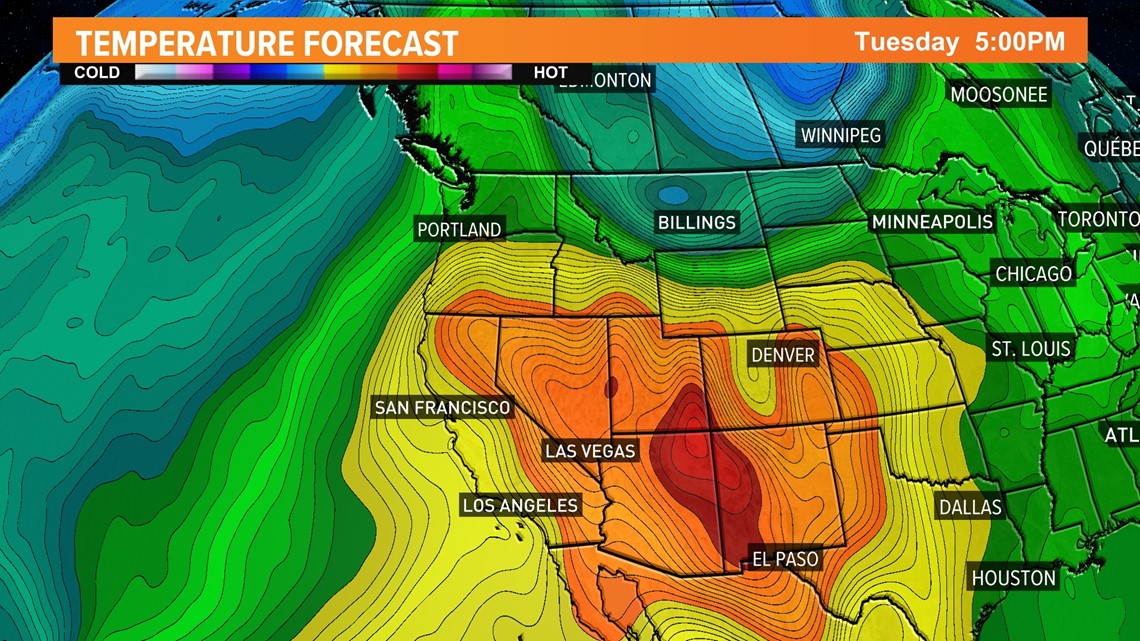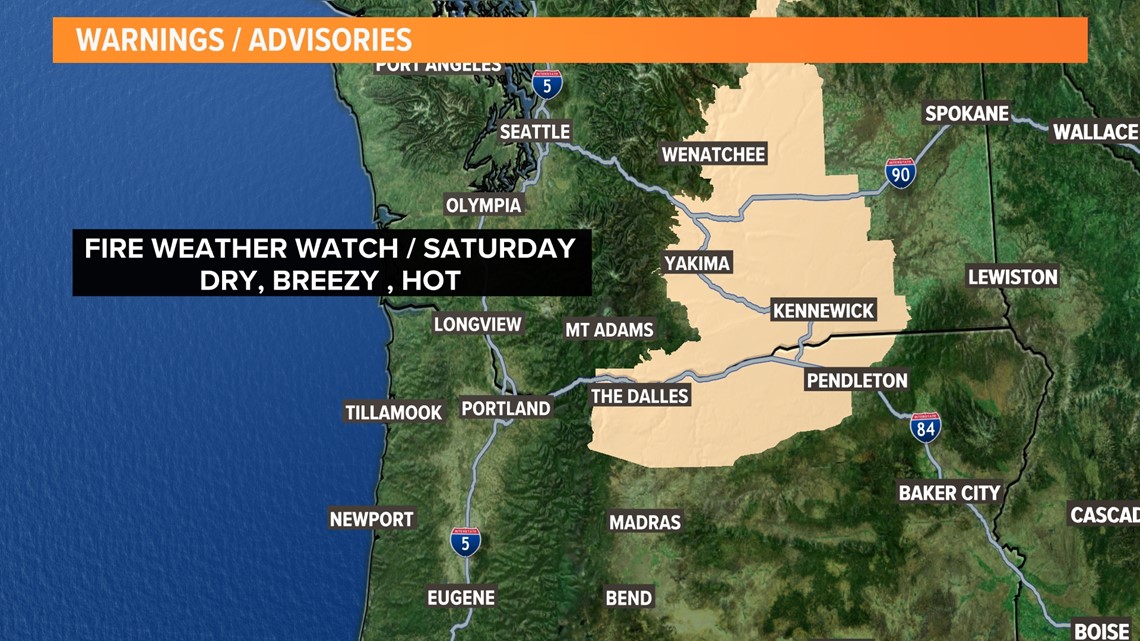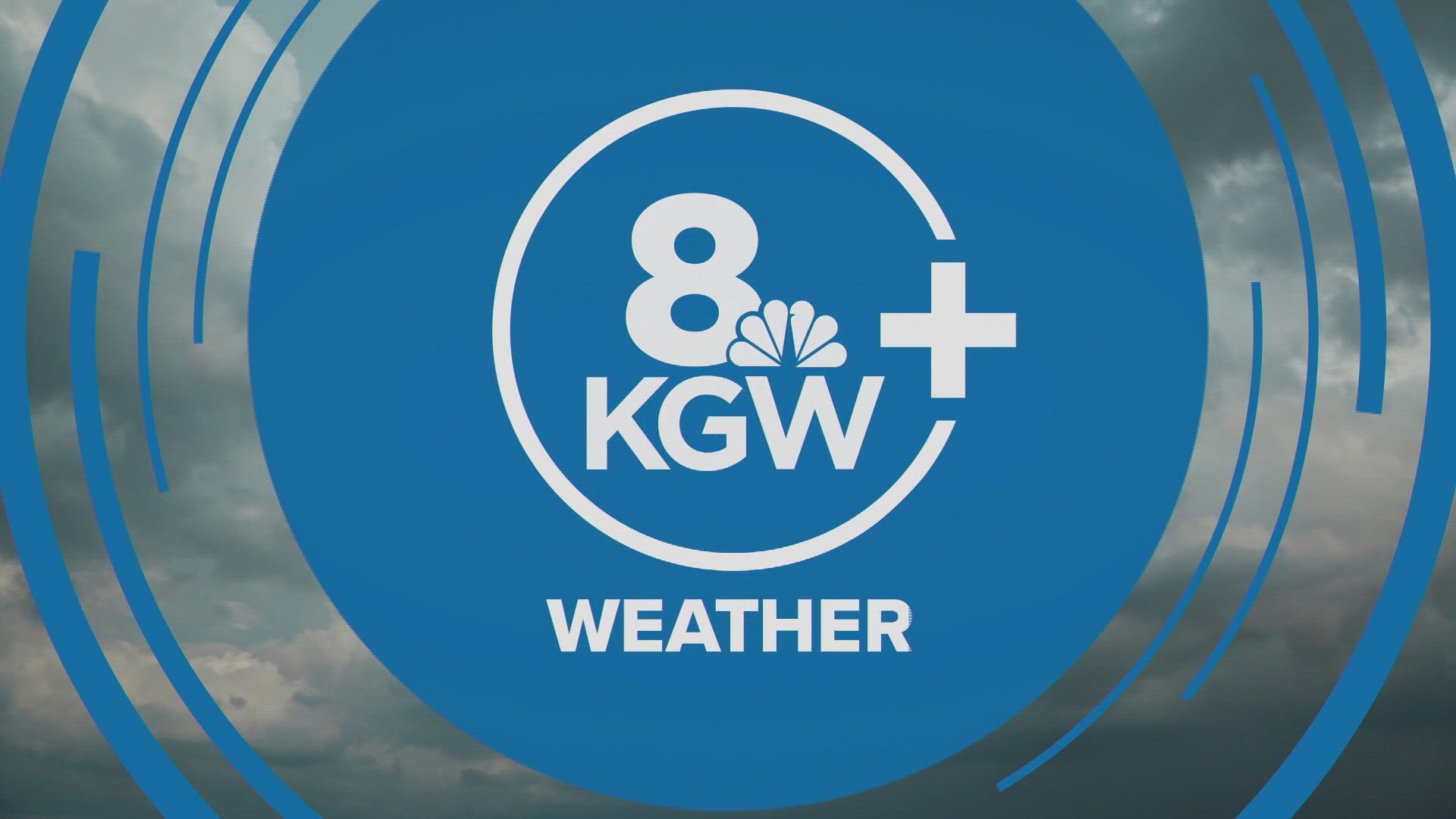PORTLAND, Ore. — The July Fourth weekend is almost here — so is a stretch of sunny, dry and hot weather. As many people head outside to celebrate the holiday, the forecast shows climbing temperatures around the Portland metro area with some spots nearing 100 degrees.
From Thursday to Sunday, high temperatures are expected to remain in the upper 80s. Next week brings hotter weather, with Portland set to rise into the low 90s on Monday, potentially beginning several days of 90-degree weather. Tuesday, the July Fourth holiday, could reach a high of 96 degrees.
"The air mass tracking map shows a hot air mass migrating west and north into Oregon July 4. Weather models show 90 degrees in Portland and Salem to possibly nearing 100 degrees in the valley on Tuesday," said KGW meteorologist Rod Hill. "Portland's hottest temperature to date this year is 93 degrees."


Fire Weather Watch on Saturday
The National Weather Service (NWS) has issued a Fire Weather Watch for Saturday. It impacts areas including The Dalles, further east to Pendleton and north into the Columbia Basin. The map below shows which areas will be affected through Saturday evening.
A Fire Weather Watch means that "critical fire weather conditions" in the forecast could lead to extensive wildfires or extreme fire behavior, according to the NWS' website.


Protecting yourself from the heat
The American Red Cross has tips on preparing for the hot weather and simple things you can to do stay cool when it arrives:
- Make sure your fans and air conditioning work ahead of time
- Take cold showers or baths to cool down more quickly
- Be sure to drink enough water and don't forget your pets
- Avoid sugary, caffeinated and alcoholic drinks
- Wear lightweight and loose clothing
- Limit outdoor activity to earlier or later in the day
- Never leave kids or pets unattended in vehicles
- Visit public libraries, malls and other public spaces with air conditioning
Click here for more cooling centers around Oregon or call 2-1-1
Traveling to the coast? Stay safe from rip currents
Rip currents can happen on the Oregon and Washington coast. They are strong water currents that move away from the shore and can pull swimmers further into the ocean.
The NWS says do not try to swim against the current. Instead, stay calm and float. If you can safely do so, swim out of the current and follow the direction of the shoreline or toward breaking waves, then at an angle towards the beach. If you're unable to swim, draw attention to yourself by waving your arms and yelling for help.

